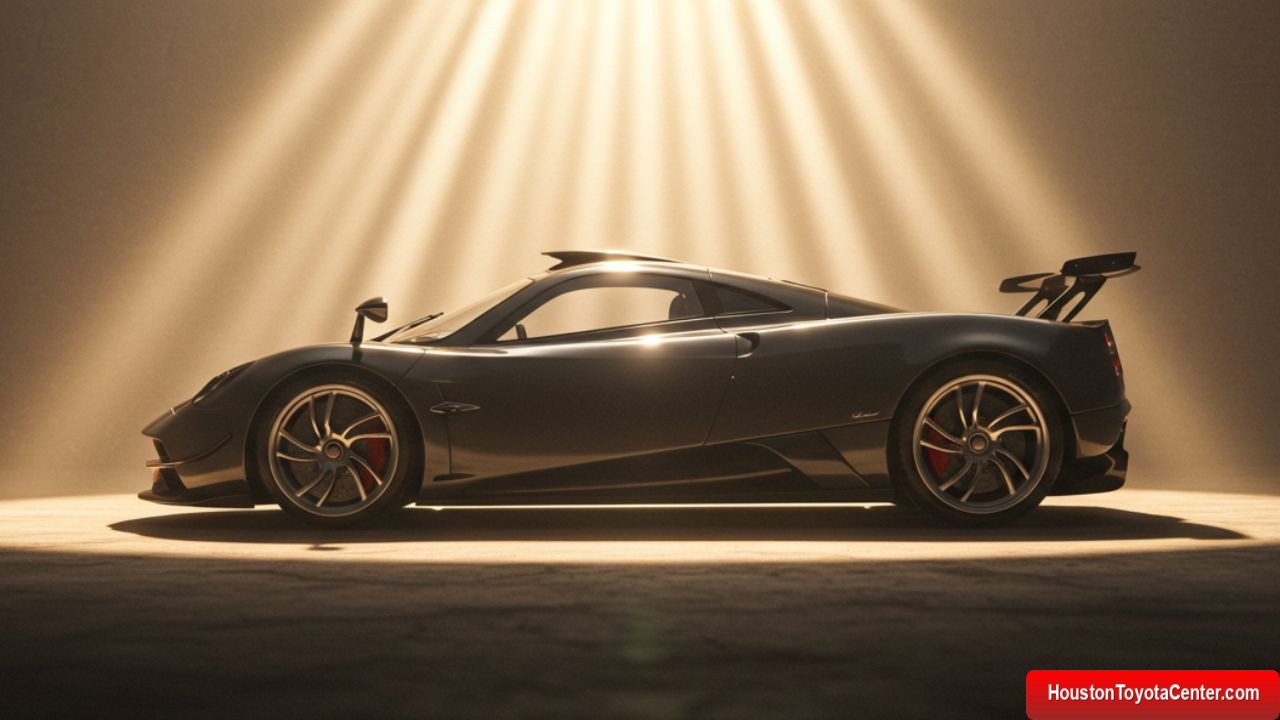The automotive world has witnessed countless marvels, but few have captured the essence of artistry, engineering, and passion like the Pagani Utopia. Unveiled as the successor to the iconic Huayra, the Utopia represents Horacio Pagani’s relentless pursuit of perfection—a hypercar that transcends speed to become a moving sculpture, a symphony of power, and a testament to human ingenuity. This article delves into the heart of the Utopia, exploring its design philosophy, groundbreaking technology, and the emotional connection it forges with drivers and admirers alike.
The Genesis of Utopia: A Visionary’s Dream
Pagani Automobili, founded in 1992 by Argentinian-Italian engineer Horacio Pagani, has always been synonymous with exclusivity. From the Zonda to the Huayra, each model redefined automotive excellence. The Utopia, however, is more than a successor—it’s a manifesto. Horacio envisioned a car that would resist the industry’s shift toward electrification and autonomous driving, instead celebrating the raw, tactile experience of driving.
Design Philosophy: Form Meets Function
The Utopia’s design is a homage to the golden age of coachbuilding, where every curve served a purpose. Inspired by Renaissance art and aerospace engineering, its bodywork blends elegance with aerodynamics. Key features include:
- Gull-wing doors: A signature Pagani element, redesigned for lighter weight and improved ergonomics.
- Active aerodynamics: Rear wings and diffusers adjust in real time to optimize downforce (up to 1,200 kg at 240 mph).
- Titanium exhaust system: A quad-pipe setup crafted to emit a visceral, mechanical roar.
Pagani’s collaboration with Mercedes-AMG for the Utopia’s engine underscores its commitment to tradition. The 6.0-liter twin-turbo V12, a masterpiece of internal combustion, delivers 852 hp and 1,100 Nm of torque, paired with a 7-speed manual or automated gearbox.
FREE: Quickly identify and understand problems with your vehicle 🚘
CLICK HEREEngineering Marvels: The Science Behind the Beauty
The Utopia’s chassis, dubbed the “Pagani Carbo-Titanium HP62 G2,” combines carbon fiber and titanium for unmatched rigidity (40,000 Nm/deg) and lightness (1,280 kg dry weight). This section breaks down its technical innovations:
| Component | Specification | Innovation |
|---|---|---|
| Chassis | Carbo-Titanium HP62 G2 | 15% lighter than Huayra’s chassis |
| Engine | AMG M158 V12 Twin-Turbo | Reengineered turbos for reduced lag |
| Transmission | 7-speed Xtrac sequential or manual | First hypercar with optional manual transmission |
| Brakes | Carbon-ceramic discs (410mm front/390mm rear) | 62-meter stopping distance from 200 mph |
| Suspension | Forged aluminum double-wishbone | Active damping with 5 driving modes |
The Utopia’s aerodynamics were refined using Formula 1-grade wind tunnel testing. Its front splitter channels airflow to cool the brakes, while the rear diffuser generates vacuum-like suction. The result? A drag coefficient of 0.33 Cd and balanced stability at top speeds.
Luxury Redefined: The Interior as a Sanctuary
Step inside the Utopia, and you’re enveloped in a cabin that rivals haute couture ateliers. Pagani’s artisans spent over 2,000 hours hand-stitching leather, polishing aluminum, and weaving carbon fiber. Highlights include:
- Ergonomic seats: Sculpted from lightweight composite and wrapped in sustainable leather.
- Analog instrumentation: A deliberate rejection of digital screens; instead, retro-style gauges display RPM and speed.
- Customization: Buyers choose from 16 million color combinations, exotic materials (e.g., platinum thread accents), and even personalized scents for the interior.
Pagani’s focus on sensory engagement extends to the gearshift. The manual transmission’s gated shifter, milled from a single block of aluminum, provides tactile feedback akin to a Swiss watch.
Performance: A Dance of Power and Control
The Utopia isn’t just about numbers—it’s about feel. On the track, it accelerates from 0–60 mph in 2.8 seconds and reaches a top speed of 238 mph, but its true magic lies in responsiveness. The V12’s linear power delivery, combined with rear-wheel steering, allows for razor-sharp cornering.
Driving Modes:
- Comfort: Softened suspension for city drives.
- Sport: Optimized throttle response and exhaust note.
- Track: Max downforce and track-focused telemetry.
Pagani’s engineers prioritized driver engagement over automation. Unlike rivals such as the Ferrari SF90, the Utopia lacks hybrid assistance, relying purely on its V12’s symphony.
Sustainability in a Hypercar? Pagani’s Unexpected Approach
While the Utopia celebrates combustion, Pagani hasn’t ignored sustainability. The company uses:
- Recycled carbon fiber: 30% of bodywork materials are repurposed from aerospace surplus.
- Ethical leather: Sourced from Italian tanneries using eco-friendly dyes.
- E-fuels: Pagani partners with synthetic fuel producers to offer carbon-neutral refueling options.
Ownership: Beyond the Car
Owning a Utopia (priced at €2.5 million before customization) grants entry into Pagani’s clandestine world. Owners receive:
- A two-day training program at the Pagani Academy in Modena.
- Access to the “Utopia Club,” hosting private track days and museum tours.
- Bespoke luggage sets and driving gear tailored to their car’s specs.
Conclusion: The Last of Its Kind?
The Pagani Utopia is a rebellion—a statement that emotion and craftsmanship still matter in an age of algorithms. It’s a car that demands to be driven, cherished, and heard. As the automotive industry pivots toward electrons over pistons, the Utopia may well be the final flourish of the analog hypercar era. For those fortunate enough to experience it, the Utopia isn’t just a machine; it’s a portal to automotive nirvana.
“We build cars for the soul, not the spreadsheet.” — Horacio Pagani


Leave a Reply